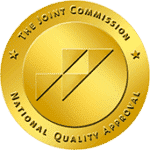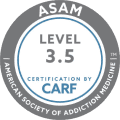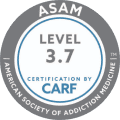Stimulant Drug Usage Amongst College-Age Adults
Although drugs cuts across people of different age groups and statuses, it is most common amongst teenagers and young adults. There is a lot of abuse of opioids, cocaine, heroin, and many more. There is naturally this impulsion to start and try out things you never have when you finally get into college. Many college freshmen get into this euphoria of doing new things because of the “freedom” they are suddenly exposed to because of the lack of parental guidance.
There is the influence of groups and peer pressure in general in colleges. To properly get the context of our discussion, you should understand that the age of individuals in college is roughly between the late teens and early to mid-twenties depending on the length of the course of study.
As you read through this article, you will understand what stimulant drugs are, their effects on their users, and why college-age adults commonly use stimulant drugs. We’ll also be looking at the data and percentage of college-age adults who consume stimulant drugs and the various reasons they take these types of drugs. We’ll also learn what the government and colleges are doing to curb drug use on their campus. We’ll provide you with some steps you can take to help these young adults that have become addicted to stimulant drugs.
What are Stimulant Drugs?
These are drugs can make you feel “high” or euphoric and are commonly described as being on “cloud nine.” This explains why they are also commonly referred to as “upper.” Stimulants make you alert and can give the user unexplainable energy.
Stimulant drugs release dopamine in the body, resulting in heightened focus and enhancing mental and physical functions for the short period that the drugs last in the body. They speed up the central nervous system’s functions, which, in turn, causes increased brain function.
These stimulant drugs usually come in the form of capsules or tablets. However, to get a faster effect of the drug or to increase the potency of the drug, many college-age adults crush the tablets or capsules and inject them directly into their system. Some even go as far as sniffing and inhaling stimulant drugs. Medical experts sometimes prescribe stimulants for the treatment of specific medical issues. One prominent example is attention deficit hyperactivity disorder (ADHD).
Examples of stimulant drugs are crack, amphetamines, methamphetamine, cocaine, nicotine, crystal meth, and more.
The Side Effects Stimulant Drugs Have On College-age Adults
Stimulants, as mentioned earlier, heighten the brain and body functions of the individual using them. It does this by releasing dopamine into the body’s system. However, all these great feelings given by the drug are always just for a short period.
Stimulants have a lot of side effects on their users. Because of these side effects, many countries still ban the use of stimulant drugs. Below are some of the side effects of stimulant drugs have on college-age adults;
- Heart Attack: Taking too much and overdosing on stimulant drugs can lead to you having a heart attack. These drugs, when used, increase the heart rate and blood pressure of the user, which can result in stroke, heart attack, a ruptured aneurysm, cardiac arrhythmias, and other related heart conditions.
Stimulant drugs increase the level of dopamine and norepinephrine, both of which are chemicals of the brain. Norepinephrine naturally affects the blood vessels, breathing, blood pressure, and heart rate. Taking a stimulant drug means an increase in these brain chemicals, which would automatically mean rapid growth in the function of the body systems that they control or are in sync with. It has been scientifically proven that the continuous use of stimulants makes the heart age quickly.
- Depression: Stimulant drugs like Adderall have been scientifically and clinically proven to be the cause of people getting depressed. Adderall, a mix of amphetamine and dextroamphetamine, has been linked to causing depression in adults and children. The issue is when Adderall has been used for an extended period, and the user stops its use suddenly, it causes the individual to struggle with depression and even suicidal thoughts.
- Cerebral Hemorrhage/ Brain Damage: A large number of stimulant drugs are toxic to the brain. For instance, Methamphetamine has been scientifically proven to be a toxin to the brain and also damages a part of the brain. It has been proven to damage the microglia which are non-neural brain cells.
Generally, stimulants use the brain neurotransmitters, which are chemical messengers in the brain, to make the nervous system, which is the body’s control system, come “alive.” However, it causes an imbalance of neurotransmitters. Using stimulant drugs causes your brain to overproduce dopamine and norepinephrine. Stimulant drugs can also cause a reduction in the grey matter of the prefrontal cortex of the brain.
- Organ Damage: Organs of the body, like the kidneys, have been proven to suffer damage due to the continuous use of stimulants. The kidneys are what process and get rid of waste products and toxins in the body. Stimulants like Amphetamines have rhabdomyolysis embedded in them, which causes the kidneys to be filled with more toxins than usual. The pressure from the toxins can make the kidneys fail.
There are many other side effects that the use of stimulant drugs can cause. We have only highlighted and explained a few of them.
The Stimulant Drugs Commonly Used By College-age Adults
There are many stimulant drugs used by people of different age groups and statuses. But some are very popular and common amongst college-age adults. The most popular stimulants used by this category of individuals are:
Adderall is the most popular of all the stimulants used by college-age adults. Adderall is a prescription drug used to treat conditions like Attention Deficit Hyperactive Disorder (ADHD) and narcolepsy. The effect the drug has when you take more than the prescribed quantity is, it produces a large amount of energy in your body.
The few hours that the stimulant lasts in your body make you very focused and full of energy. Adderall usually comes in tablets and capsules. This drug is the most abused stimulant drug because it helps college-age adults contrate while they study for their tests and exams.
- Ecstasy. It has both stimulant and hallucinogenic effects on its users. This particular stimulant drug is called Methylenedioxy-methamphetamine, which is commonly referred to as Ecstasy or Molly.
The drug gives the effect of pleasure and feelings of energy. The drug usually comes in a tablet or capsule form. Some people, however, consume it in liquid or powder form. It helps to increase three main chemicals in the brain, which are Dopamine, Serotonin, and Norepinephrine.
Dopamine increases the energy level in the individual. Serotonin controls your mood, sleep, appetite, and many more body functions. Norepinephrine, on the other hand, helps to control your blood pressure and heart rate. The effects of the drug usually last for three to six hours. It is commonly referred to as a recreational drug.
- Crack Cocaine. It is commonly just called crack or rock. This particular stimulant is locally made by the individual who wants to consume it. Crack cocaine is typically made by mixing cocaine with baking powder or ammonia to get a mixture that looks like crystallized rocks, hence why it is called “rock.”
It is usually vaporized in a glass pipe, and it is also injected into the body system sometimes. The use of the drug helps to build a high level of confidence and gives you so much energy. The effect of using crack cocaine is far more potent than just cocaine itself. This is the most dangerous stimulant drug because of its side effects and how easy it is to overdose on crack cocaine.
- Nicotine. It is a stimulant that is usually seen everywhere. This drug helps to speed up communication between the brain and the body. Nicotine is a core ingredient or compound found in tobacco products. It helps to keep you awake and alert.
- Caffeine. You may even be wondering how caffeine is a stimulant. Caffeine is what you get from a cup of coffee, a chocolate bar, tea, and more. Caffeine also works like Nicotine. It makes the body alert and awake. Too much of it can cause serious side effects.
The Data and Percentage of College-age Adults That Consume Stimulant Drugs
According to The United Nations Office On Drugs And Crime, over 35 million people struggle with drug abuse. Of these large amounts of people abusing drugs, the UNODC states that college-age adults take the greater share; they are also the most affected by the side effects of these stimulant drugs because they consume them in large quantities.
Another report states that in 2018, about 2.2 million young adults between the ages of 18 and 25 abused prescription stimulants. There are a lot of reports and publications that also report that college-age adults take a higher percentage of the total number of people that use these drugs across different age groups.
What Are The Reasons Why College-Age Adults Consume Stimulant Drugs?
There are different reasons why college-age adults make use of stimulant drugs. The reasons range from peer pressure to the strong desire to pass a test or an exam to ingesting it just for fun and recreation. Some even use it for a temporary boost of confidence. We will be highlighting and discussing some of these reasons below.
- Peer pressure. Many people in the college-age group have been under the protection and guidance of their parents and, in a way have been restricted from doing a certain amount of things. Getting into college, they get to what they never got a chance to do or explore while under their parents. As an individual getting into college for the first time, there is this pressure to do what everyone around you is doing just so that you can fit in.
One common reason why most college-age adults consume stimulant drugs is so that they can be able to focus on their studies. The drugs help to keep them alert, awake and focused. Because dopamine is released and there is an increase in brain function at that time, they can assimilate more than they normally can while under the influence of the drugs.
- Recreation, pleasure and fun. Have you ever been to college parties? The highlight of most of these parties is the numerous and various bottles of alcohol, as well as the different stimulant drugs available. A lot of people in this age group take these drugs when they are also stressed to ease off the stress but the use of these drugs and mixing of alcohol can come at a steep cost to one’s health.
- Boosting confidence level. Because of the effect the drug has on the body which includes making the user feel very confident and be in a state of euphoria. A lot of people in this age group would rather take the stimulants that would boost their confidence for a short period of time than to make a fool of themselves.
What are the Measures that have been put in place by the Government to Reduce and Prevent the Wrong Use of these Drugs by College-Age Adults?
There have been many debates on concerning the issue of the use of drugs and their abuse. While some countries have legalized the use of stimulant drugs and other substances, most countries have refused to do so.
What the government of most countries have done to reduce and prevent the use of stimulant drugs is to enact Laws and Policies against it, making it a crime to do use such drugs. That’s why sometimes, you Law enforcement agencies crashing into a college party and arresting those under the influence of stimulant drugs.
What Are The Steps You Can Take To Help College-Age Adults That Have Become Addicted To Stimulant Drugs?
There are different treatment plans available for individuals who have become addicted to stimulant drugs. These treatments aim to ensure that the college-age adult stops using the drugs; that such an individual is finally drug-free. After going through all the stages of withdrawal symptoms, he can function properly in society. Some of the steps to take are;
- Detox. Detox is the first step to overcoming an addiction to stimulant drugs. Getting treatment at a drug rehab facility will allow you to detox safely and comfortably. Ridding the the body of the adderall, cocaine, or esctasy will allow you to begin focusing on why the addiction started and how to avoid using drugs in the future.
From the answers he gives to your questions, you would be able to determine what treatment method he would have to go through. You cannot use the same treatment methods to treat everyone who is struggling with an addiction to drugs.
- Medications. After seeing a medical expert on drug and substance abuse and addiction, such an individual can be placed on drugs to help with withdrawal symptoms that may come up from stopping the use of the stimulant drugs. Medicine can also be used to help reduce withdrawal symptoms which is called medically assisted detox.
For tobacco products, for instance, there are drugs available to help an individual withdraw entirely from its use by making provision for “replacements.” Some of these replacements include gums, spray, lozenges, and many more. Drugs like Bupropion and varenicline are approved for use to combat tobacco addiction.
Counseling and Individual therapies. The adult has to acknowledge and know that there is a problem with him, and he wants a solution to that problem. Therapy can help them find out why they started using drugs like Adderall or cocaine.
- Group Therapies. This is one treatment that has proven to work effectively over the years. People struggling with similar drug addictions are put together in a group to serve as a support system for each other.
During the sessions, they talk about their journeys through drug addiction, their current treatment plan, and their end goal. It serves as a form of accountability.
- Treatment of Mental health issues and other medical issues resulting from the use of stimulant drugs. Mental health issues may arise from the abuse of these drugs. The individual may suffer from health conditions like heart and kidney damage resulting from the continuous abuse of stimulant drugs. Medications and treatment would be given to help tackle treat these medical conditions.
- Follow-up. Even after the completion of the treatment, the individual would still be followed up to prevent a relapse.
The use of stimulant drugs is really on the highrise among college-age adults. There is a lot of sensitization going on to help stop this trend from spreading amongst college students.
Verify Insurance
Let’s get you or a loved one help with a few simple steps.



